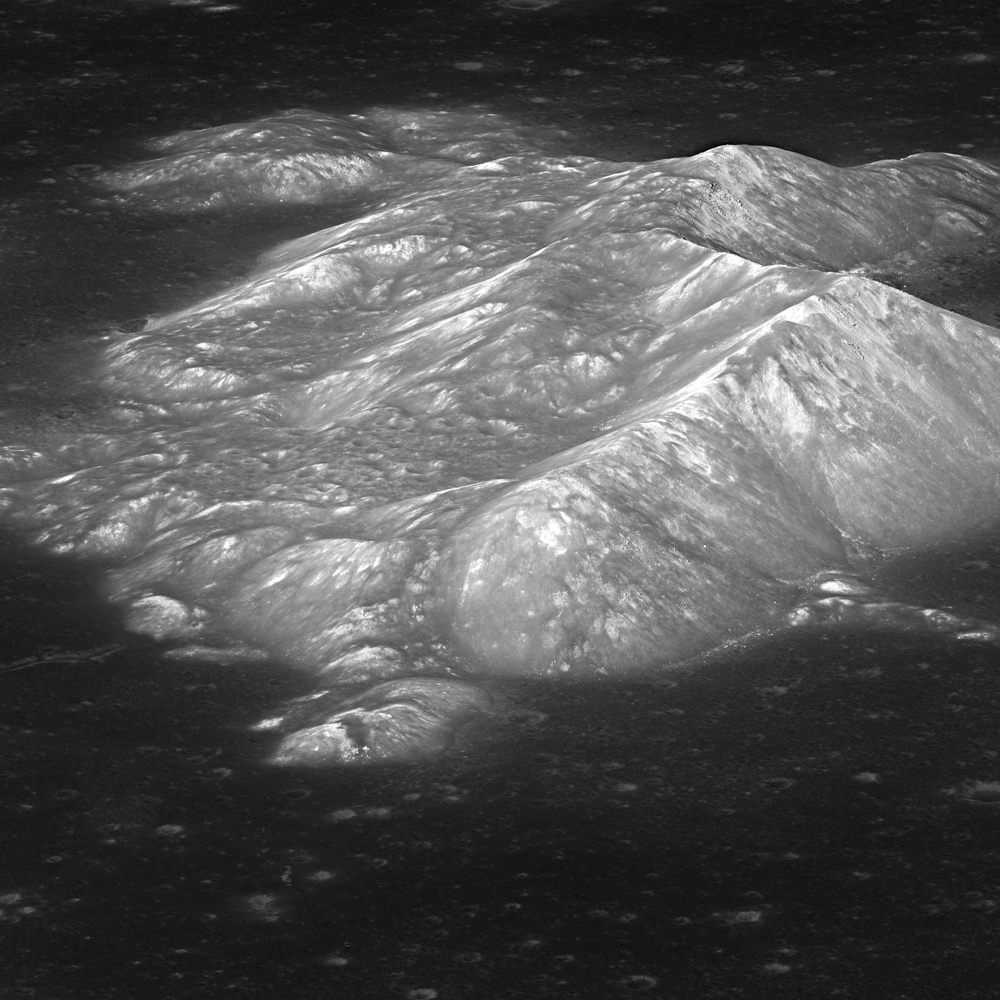
Today's Featured Image is a spectacular LROC NAC oblique view looking East at the central peak of Tsiolkovskiy crater. This large impact crater, with a diameter of 185 km, is located on the farside at 20.38°S latitude and 128.97°E longitude. It is classified as a complex crater because of its terraced walls, scalloped rim, and central peak, which rises over 3400 m (11,150 ft) from the crater floor.
Central peaks of craters form in a matter of seconds from very energetic impact events. The tremendous pressure imparted from the impactor on to the target rock causes it to behave like a plastic for a few brief seconds. An imperfect analogy is a water droplet splashing into water, at first which produces a central jet, the fluid-like behavior of rock after the impact causes it to rebound upwards. Another factor assisting in the uplift of a central peak is the gravitational collapse of the crater walls which pushes material in the center upwards.
The floor of Tsiolkovskiy crater is partially flooded by mare basalt, which is the low reflectance smooth material seen in both the Featured Image above and the WAC context image below. The mare basalt on the floor of Tsiolkovskiy crater formed from basaltic lava that erupted after the crater formed and pooled. Mare basalts are predominantly seen on the lunar nearside; they make up the dark plains we are familiar with when we look at the Moon. This uneven distribution of mare basalts is thought to be due to the difference between the crustal thickness on the nearside and farside. The nearside crust is thinner, allowing easier access for basalt to flow up to the surface, whereas the thicker crust on the farside makes it so that only large impacts, like the one that formed Tsiolkovskiy crater, have enough energy to excavate deep enough into the crust to allow the release of basaltic lava.
The Tsiolkovskiy Crater was a Constellation Program region of interest because of the possibility to study the central peak, where astronauts could sample rocks that came from deep beneath the lunar surface.
Explore Tsiolkovskiy's central peak from an orbiting astronaut's perspective below!
Related Posts:
Floor of Tsiolkovskiy - Constellation Region of Interest
Follow the highlands-mare boundary in Tsiolkovskiy!
Sampling a Central Peak
Uplift, Boulders of Tsiolkovskiy
Bullialdus Central Peak Oblique
Published by Raquel Nuno on 19 November 2013
